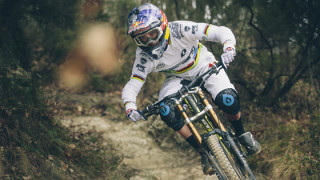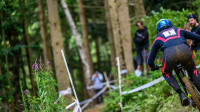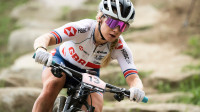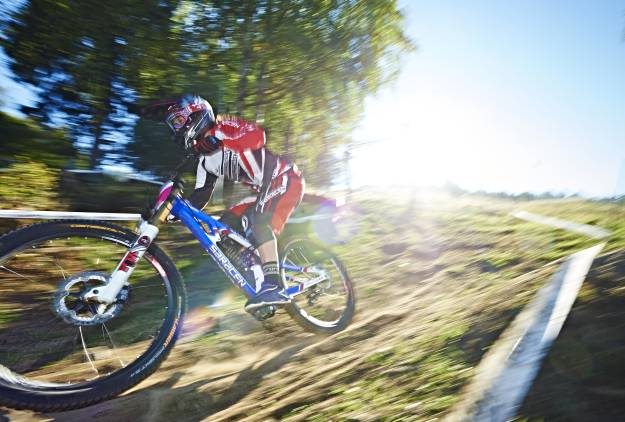When Rachel Atherton won the 2013 women’s downhill world title it capped the greatest year of her cycling life.
Having won her first world title at the age of just 21 back in 2008, the next few years were cruelly interrupted as a number of serious injuries took their toll.
However that would all change in 2013. Going into the season fully fit she enjoyed the best year of her career with consistently outstanding performances landing her the UCI Mountain Bike World Cup Downhill series and the British national title to go along with her rainbow stripes.
Her performances capped what could potentially become a golden era for female downhill mountain biking.
Hot on Rachel’s tail and showing outstanding potential is Manon Carpenter.
Manon first rose to prominence back in 2011 when she became junior downhill world champion and also won the world cup series. She has continued to build on her success at senior level winning the UCI Mountain Bike World Cup Downhill series in 2014, beating Atherton into 3rd place overall. Atherton won the final race of the series to head into the world championships in good form.
The challenge for people involved in the world of downhill mountain biking now is capitalising on the success of riders such as Rachel and Manon and using it to inspire more women to get involved in the sport.
Si Paton, British Cycling MTB Downhill Series race director, admits that there are still challenges to overcome but says that the right structures are now in place.
“There is still a lot of work to do as downhill is still considered a male dominated sport and it can be a bit intimidating for women who are looking to get involved.
“However the hierarchy that we now have in place allows women to take it step by step and work their way up gradually rather than being thrown in at the deep end of competition.”
The structure that Paton refers to sees women needing to gain 100 British Cycling race points in order to begin racing at a national level.
These points have to be earned at regional races with 40 points available for the winner, with points available all the way down to the rider who finishes in 40th place. This allows riders to gain experience of racing and make the step up when they have gained the necessary race craft to compete at the higher levels.
The structure is clearly having a positive effect. The number of women competing in the National Series Downhill has increased by 60% from 2010, while participation at grass roots level is also on the rise. The Peaty Steel City Downhill is a prime example of this. In 2011 this event attracted just 14 female participants. By 2014 this had rhad risen to 50. This rise is representative of female participation across many Downhill events.
Paton hailed the impact that riders like Atherton have in terms of inspiring young women to take up the sport.
“Young women can see the achievements of people like Rachel and think maybe I can do that. I think the fact that Rachel has young British riders like Manon Carpenter and Tahnee Seagrave hot on her heels makes it feel like more people now have the opportunity to come through and be successful.
“Back in the days when Tracy Moseley just dominated the British scene I think it was probably off putting for a lot of young riders. Now that the process is broken down into a number of steps for them being successful suddenly becomes a much more achievable goal.”
Speaking with his race director hat on Paton is keen to see the number of women involved in the sport continue to rise.
“We welcome female participation at our events and want this to continue to increase both at a competitor level but also in the number of women who are coming along as spectators.
“The continued success of British female riders and the higher profile enjoyed by riders like Rachel Atherton will hopefully see more women inspired to get involved at all levels, from the grass roots right through to elite level.”










